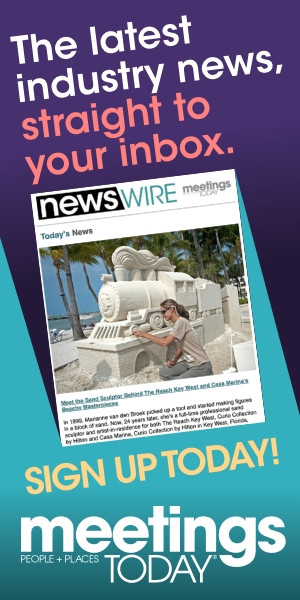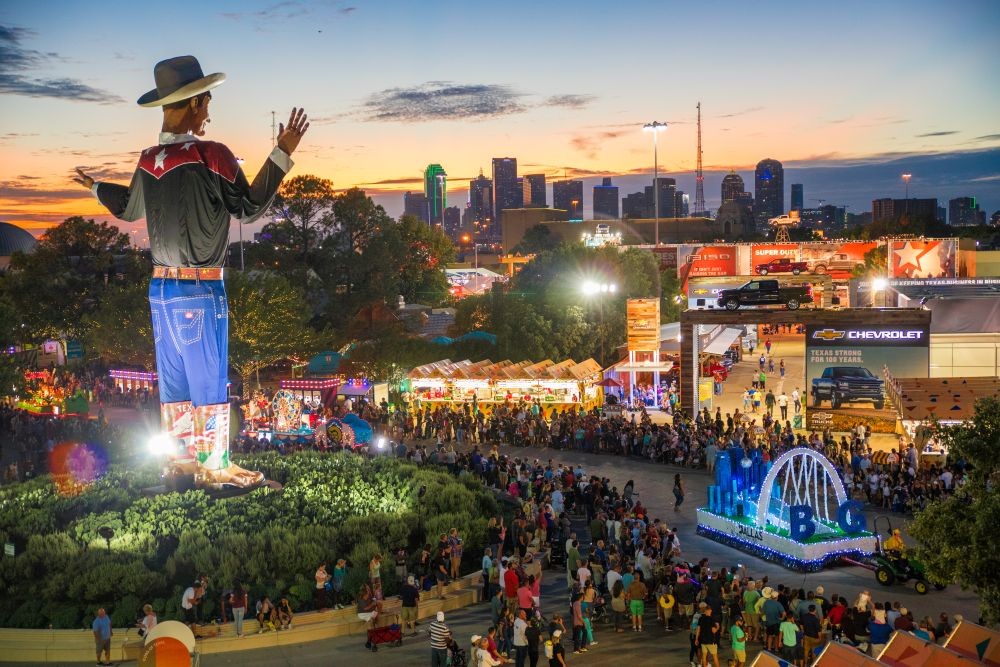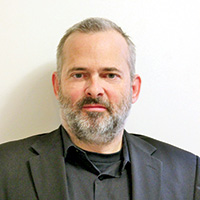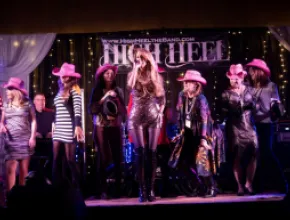Once, the entire North Texas region was tall-grass prairie land inhabited by Native American tribes. The last remnant from that era is preserved as Blackland Prairie Park in Arlington. From settlement in the 1840s to the arrival of the railroads starting in the 1870s, a dramatic transformation was on.
In 1971, local civic leaders formed the North Texas Commission “to maximize the visibility of the area as an excellent place to live and do business” and in 1972 copyrighted “Southwest Metroplex” to identify the area’s loose alliance of communities.
Expansion of the Metroplex has been meteoric ever since as billions of dollars continue to pour into new and expanded hotels, convention centers, sports venues and other group infrastructure, alongside commercial, community and Fortune 500-driven corporate growth.
Amid modernization’s relentless advance, old guard landmarks stand their ground. Mixing the old with the new, here are some of the many group connections with the Metroplex’s past, present and future.
Dallas
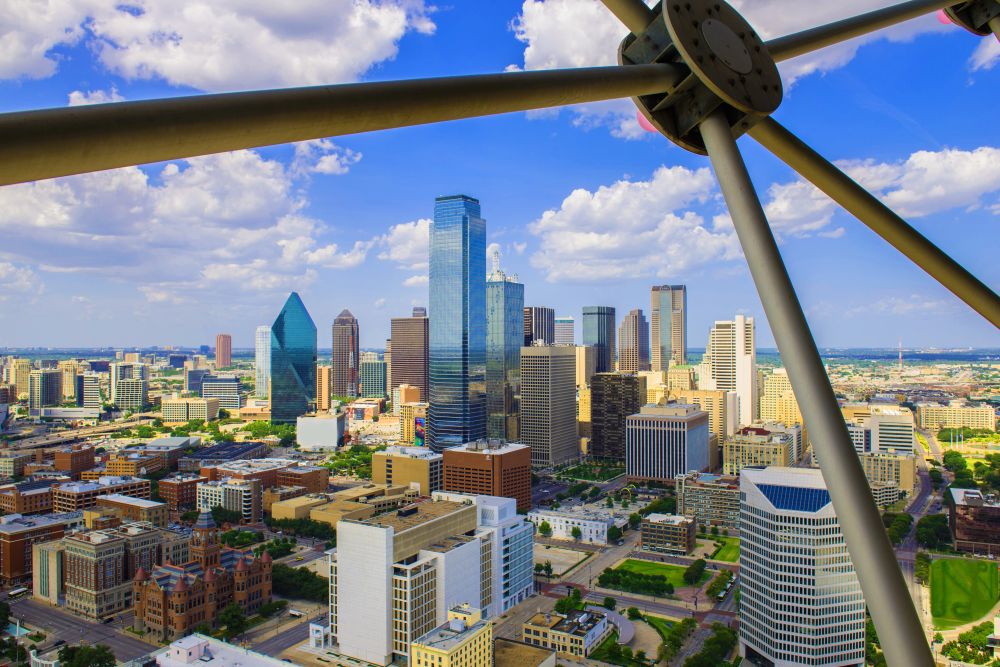
In 1841, Tennessee-born land speculator John Neely Bryan established a settlement in a vast wilderness area by the Trinity River in what was then the Republic of Texas. He called it Dallas.
The origin of the name, wrote Texas Monthly in 2018, is “a whodunit with the last page maddeningly ripped out.” Bryan claimed it was after a friend, or the Scottish-Gaelic word for "dwelling in the meadows,” but the inspiration died with dementia-stricken Bryan in 1877.
There is no mistaking the modern metropolis that Bryan’s humble cabin became, though.
Continuing a running trend, Dallas finished 2024 as the nation’s hotel development leader in three top categories. According to Lodging Econometrics’ Q3 2024 U.S. Hotel Construction Pipeline Trend Report, Dallas had a record high 194 projects and 22,803 rooms in the pipeline. Big D also had the most scheduled starts for the 12 months ahead (73 projects/8,708 rooms) and most hotels in early planning in Q3 2024 (91 projects/10,652 rooms). Dallas is second behind NYC in active under-construction properties with 30 projects adding 3,443 rooms.
The expanding hotel inventory will critically support the new 2.5 million-square-foot Kay Bailey Hutchison Convention Center Dallas, which broke ground last June.
Currently anticipating an opening in 2028/2029 with bookings starting in 2029, the new venue, part of a $3.7 billion master plan, will include 800,000 square feet of exhibit space, 430,000 square feet of breakout space, 105,000-square-foot ballroom, outdoor event terraces and much more. The future-forward development aims to fuse the new convention and entertainment core with surrounding neighborhoods into a unified, walkable visitor district.
The plan integrates updates to two event-capable heritage venues, the circa-1957 Dallas Memorial Arena and The Black Academy of Arts and Letters. Originated in 1897 as the first organization to bring together Black artists and scholars from around the world, the latter has counted such legends as Harry Belafonte, Lena Horne, Duke Ellington, Sidney Poitier and Ruby Dee-Davis as fellows and members.
Landmark group hotels include The Adolphus, a downtown crown jewel since 1912; The Statler Dallas, originally the 1956 Statler Hilton; and 1,606-room Hilton Anatole, offering 600,000-plus square feet of space amid world-class art.
Home of the State Fair of Texas since 1886, site of the 1936 Texas Centennial Exposition and pivotal in the city’s development, Fair Park is the nation’s only intact pre-1950s World’s Fair site. Featuring the world’s largest assemblage of 1930s Art Deco-style exhibition buildings, art and sculpture, the 277-acre campus combines to be an epicenter for events.
Profound poignancy permeates The Sixth Floor Museum at Dealey Plaza. Housed on the sixth and seventh floors of the historic Texas School Book Depository building from which Lee Harvey Oswald assassinated President John F. Kennedy on November 22, 1963, the museum and its “John F. Kennedy and the Memory of a Nation” exhibition is moving beyond words, culminating in the chilling view from the sniper’s perch.
The nearby 50-story geodesic sphere-topped Reunion Tower and connected Hyatt Regency Dallas have commanded the Dallas skyline since 1978. The latter houses an observation deck and upscale steak and seafood restaurant Crown Block, recommended by Michelin in the guide’s inaugural Texas awards last year. Next door, the Wolfgang Puck-catered Union Station Dallas is a restored Beaux-Arts beauty from 1916 offering 26,000-plus square feet of versatile space. Other transporting spaces include the 1921 Majestic Theatre and 1930s Texas Theater.
[Related: Apply to Attend Meetings Today Live! National in Irving, Texas]
Irving
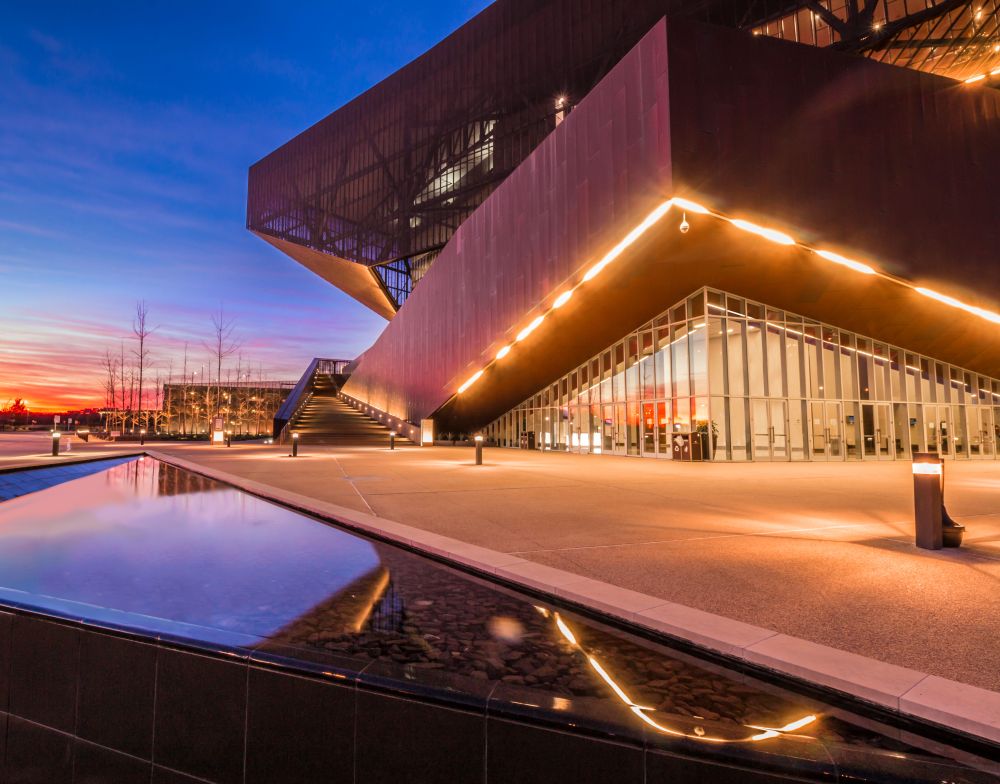
In 1972, millionaire rancher Ben Carpenter began transforming his El Ranchito de Las Colinas ("the Little Ranch of the Hills") in Irving into one of America’s first master-planned communities. Centrally located between Dallas and Fort Worth and close to DFW International Airport and Love Field, his 12,000-acre development, named Las Colinas, attracted 130-plus corporate firms in its first seven years.
Today, Las Colinas is the “Headquarters of Headquarters” of North Texas with more than 27 million square feet of office space and more corporate headquarters per capita than any other city, including a host of Fortune 500 and Fortune 1000 companies.
Irving has also been a magnet for hotel growth, offering nearly 13,000 rooms in 85-plus properties. Crown jewels include the former Four Seasons Club and Resort Dallas at Las Colinas.
Last year, the legendary luxury resort was relaunched as The Ritz-Carlton Dallas, Las Colinas following a $55 million refresh. Integrating a 427-room hotel, 84,000 square feet of renovated meeting space, new lobby bar and other fetching elements, the property will play host to our three-day Meetings Today LIVE! National event this April.
The 2011 debut of the striking Irving Convention Center at Las Colinas, championed by Visit Irving Executive Director Maura Gast, laid the foundation for development of an integrated visitor district that today includes the 350-room Westin Convention Center Hotel and $173 million Toyota Music Factory entertainment complex, anchored by an 8,000-seat indoor/outdoor amphitheater operated by Live Nation.
Irving’s original soundtrack was the sound of steel wheels. In 1902, Otis Brown and J.O. Schulze of the Chicago, Rock Island & Gulf Railway founded Irving as a link between Dallas and Fort Worth. Brown’s wife Netta loved legendary writer Washington Irving, Schulze belonged to the Washington Irving Literary Society, and thus Irving got its name.
The Irving Heritage District features a charming Main Street and Heritage Park attractions include the 1887 Caster Cabin and replica of the 1903 Rock Island Depot.
Other draws include the Mustangs of Las Colinas--the world's largest equestrian sculpture features nine bronze wild mustangs galloping across a lake--and Las Colinas Flower Clock, a working 20-foot-diameter clock made up of 10,000-plus flowers.
[Related: Leadership in Action: How These 6 Women Drive Group Market Success in Texas]
Arlington
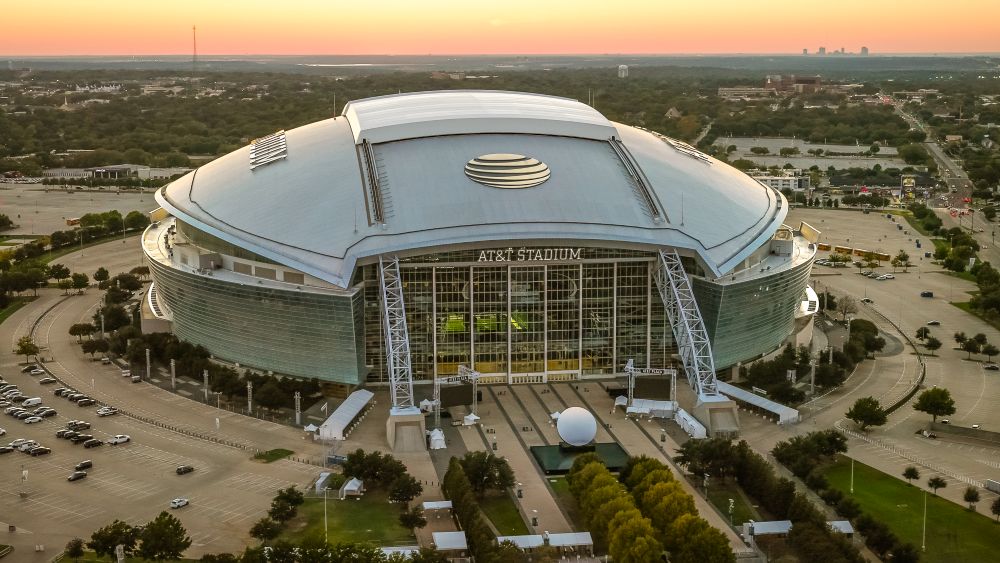
In Arlington, massive changes were afoot in 2009 when the Dallas Cowboys’ new $1.2 billion stadium opened as the world’s-largest domed stadium with a capacity of 100,000-plus. Renamed AT&T Stadium in 2013, the colossus provided a breathtaking preview of Arlington’s visionary future and how far the former railroad town had come.
Inhabited by Caddo, Comanche and other Native American peoples prior to 1840, Arlington was founded in 1876 as a market town on the Texas and Pacific Railway for surrounding farms. Economic prosperity followed as the city became a major hub for the sale and shipment of crops and cattle. Famed for horse racing and gambling in the early 20th century, Arlington’s population boomed after WWII, accelerated by the opening of a General Motors plant in 1954.
Tourism arrived in 1961 with the opening of the Disneyland-inspired, group-capable Six Flags Over Texas amusement park. Sports hit the scene in 1971 when the Washington Senators moved to Arlington and became the Texas Rangers.
The pivotal turn toward Metroplex event market preeminence came in 1994 with construction of the $191 million Ballpark in Arlington. Renamed Globe Life Field in 2014, the Ballpark became Choctaw Stadium in 2021 following the 2020 opening of the new-build Globe Life Field.
Integrating other components, including the new 888-room Loews Arlington Hotel, with skybridge connections to the 266,000-square-foot Arlington Convention Center and 300-room Live! By Loews hotel, these major league venues form a $4 billion multi-use district with myriad rental options for small and large-scale events. Yet more assets include the 35,000-square-foot Texas Live! entertainment and dining venue, and versatile Esports Stadium Arlington.
Many historic downtown buildings were demolished during Arlington’s sweeping urban renewal phase between 1950 and 1970. Survivors include the Arlington Music Hall, opened in 1950 as a movie house and early showcase of balcony- and theater-style seating. Today, the restored treasure, featuring state-of-the-art sound, is an enduring hit for concerts and private events. Aligned with the City of Arlington’s Downtown Master Plan, the expanding Urban Union District features restaurants, retail and new vintage-style 23-room Rambler Inn.
Unique heritage venues include Top O’Hill Terrace. Billed as “Vegas Before Vegas,” this original 1920s tearoom famously became an illegal gambling den in the 1930s. Arlington Baptist University acquired the state landmark in the 1950s and offers guided tours by appointment that reveal the underground escape tunnel, ingenious methods for disguising the gambling operation and other intrigues.
More than 40 million Americans have served in the U.S. Armed Forces since the Civil War. Scheduled to open this March, the National Medal of Honor Museum pays tribute to the 3,519 service members to date who have received the Medal of Honor, our nation’s highest and most prestigious military decoration. Located in the entertainment district, the world-class facility offers versatile space for meetings and events.
[Related: 5 Texas Museums With Inspiring Event Spaces]
Frisco
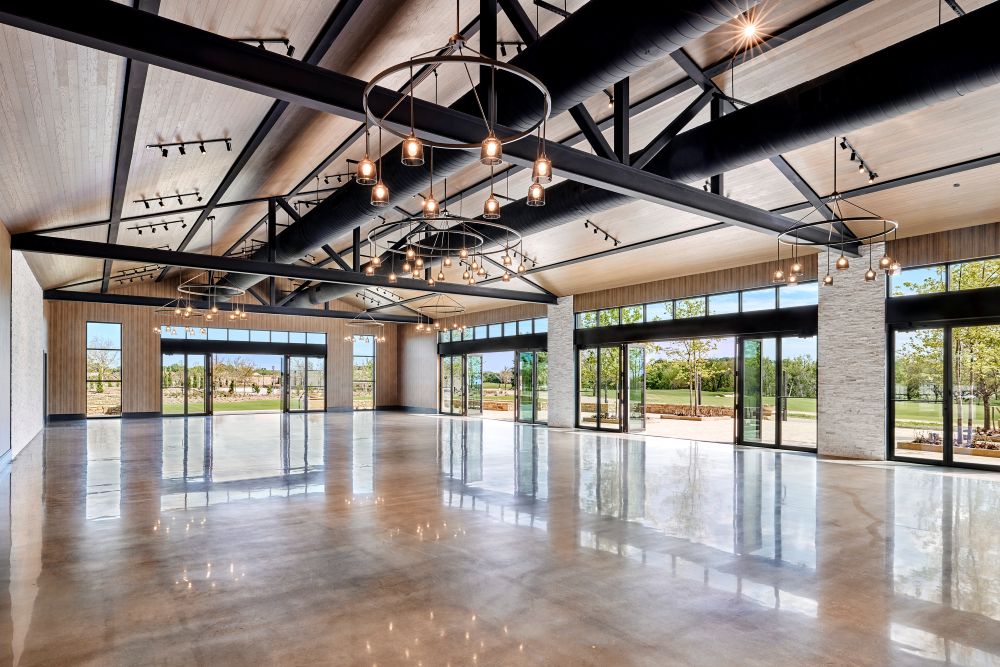
First settled by families following the Shawnee Trail, a former Native American footpath on which millions of longhorn cattle were driven to markets in the north, Frisco originated around 1860 as the ridge-top community of Lebanon. In 1902, builders of the St. Louis-San Francisco Railway came to the area. Requiring watering stops for their steam locomotives, they chose lower ground four miles to the west. Residents rolled their homes on logs to the new spot, which they named Frisco City, later shortened to Frisco, after the railroad company.
In the ensuing decades, Frisco remained a productive farming town of around 2,000 citizens. By 2003, when Visit Frisco was founded, the population had increased seven-fold. Yet, as the bureau’s Executive Director Marla Roe recently shared, “nobody knew who, what or where Frisco was” back then.
Today, this fast-growing city 30 miles north of Dallas has global visibility as “Sports City USA” following two decades of transformation starting in 2003 with the arrival of the Texas Rangers’ minor league affiliate Frisco Rough Riders, the Texas Tornado junior hockey team and front office and practice facility of the NHL’s Dallas Stars.
FC Dallas of Major League Soccer followed in 2005, bringing 20,500-capacity Toyota Stadium to the market. In 2018, the team introduced the $58 million event-capable National Soccer Hall of Fame. Ahead of the 2026 Men’s FIFA World Cup, with nine matches scheduled for AT&T Stadium in Arlington, a $182 million stadium upgrade is scheduled to start this month for completion by 2028.
Monumental, too, was the 2016 opening of The Star, the Dallas Cowboys’ $115 million event-capable headquarters and training facility. In 2022, the PGA of America relocated from Palm Beach, Florida, to Frisco, followed a year later by the adjacent 500-room Omni PGA Frisco Resort. Set on 600 acres, the $520 million destination property, offering 127,000 square feet of highly versatile space, became an instant hit with groups.
Evocative callbacks include the Frisco Heritage Museum, Museum of the American Railroad and outings in historic downtown’s eclectic Frisco Rail District.
[Related: The Group Dining Scene in Texas Features Cross-Cultural Ingredients and Influences]
More Metroplex Memory-Makers
Fort Worth
Founded in 1849 as a military outpost, Fort Worth is fortifying its group market future by enhancing the Fort Worth Convention Center, starting with a $95 million first-phase expansion targeting completion by 2026. Meanwhile, the City of Cowboys and Culture remains rooted in authentic group-capable anchors such as the late 1800s Fort Worth Stockyards National Historic District, where unique programs include the world’s only twice-daily cattle drive. Other heritage draws include the National Cowgirl Museum and Hall of Fame, originated in 1975; Fort Worth Museum of Science and History, chartered in 1941; and 1935 heirloom Joe T. Garcia’s, famed for its fajitas and other Mexican fare, and ever-popular for private and catered events.
Grapevine
In 1843, Sam Houston, hero of Texas’ fight for independence and the first and third president of the Republic of Texas, met representatives of 10 Native American nations at Grapevine Springs to sign a peace treaty that opened northern Texas for settlement. Families from Missouri arrived the following year, naming the town Grape Vine a decade later for its proximity to Grape Vine Springs, the Grape Vine Prairie and the abundant wild mustang grapes growing in the area.
Today home of the 1,814-room Gaylord Texan Resort & Convention Center, a blockbuster group destination offering 490,000 square feet of flexible space, Grapevine’s historic downtown features the Palace Arts Center, incorporating the Art Deco-era Palace and Lancaster Theatres. Group excursions on the Grapevine Vintage Railroad include the scenic ride to the Fort Worth Stockyards along the historic Cotton Belt Route.
Settled in the 1840s by pioneers from Kentucky and Tennessee, Plano, after the Spanish for “flat,” grew up around a sawmill, gristmill and country store. Incorporated in 1873, the city’s expansion began with the arrival of the Houston and Central Texas Railway. Those quaint days are long past as this corporate boomtown continues to grow as the ninth-largest city in Texas.
Plano
Receiving three “Destination Excellence” awards from the Texas Association of Convention and Visitors Bureaus last August, Visit Plano is a one-stop shop for planners and organizers. Equipped for 5,000-capacity gatherings, including 21,600 square feet of exhibition space, the full-service Plano Event Center headlines a complete package of modern meetings venues and group hotels.
Nearby attractions include Plano’s historic downtown and the world-famous Southfork Ranch. Converted into a tourism attraction and event location in 1985, the former filming location for the iconic Dallas TV show (1978 to 1991) hosts numerous annual gatherings in its 63,000-square-foot conference and event center and outdoor venues.
Connections
Read more meeting and event news in Texas.


